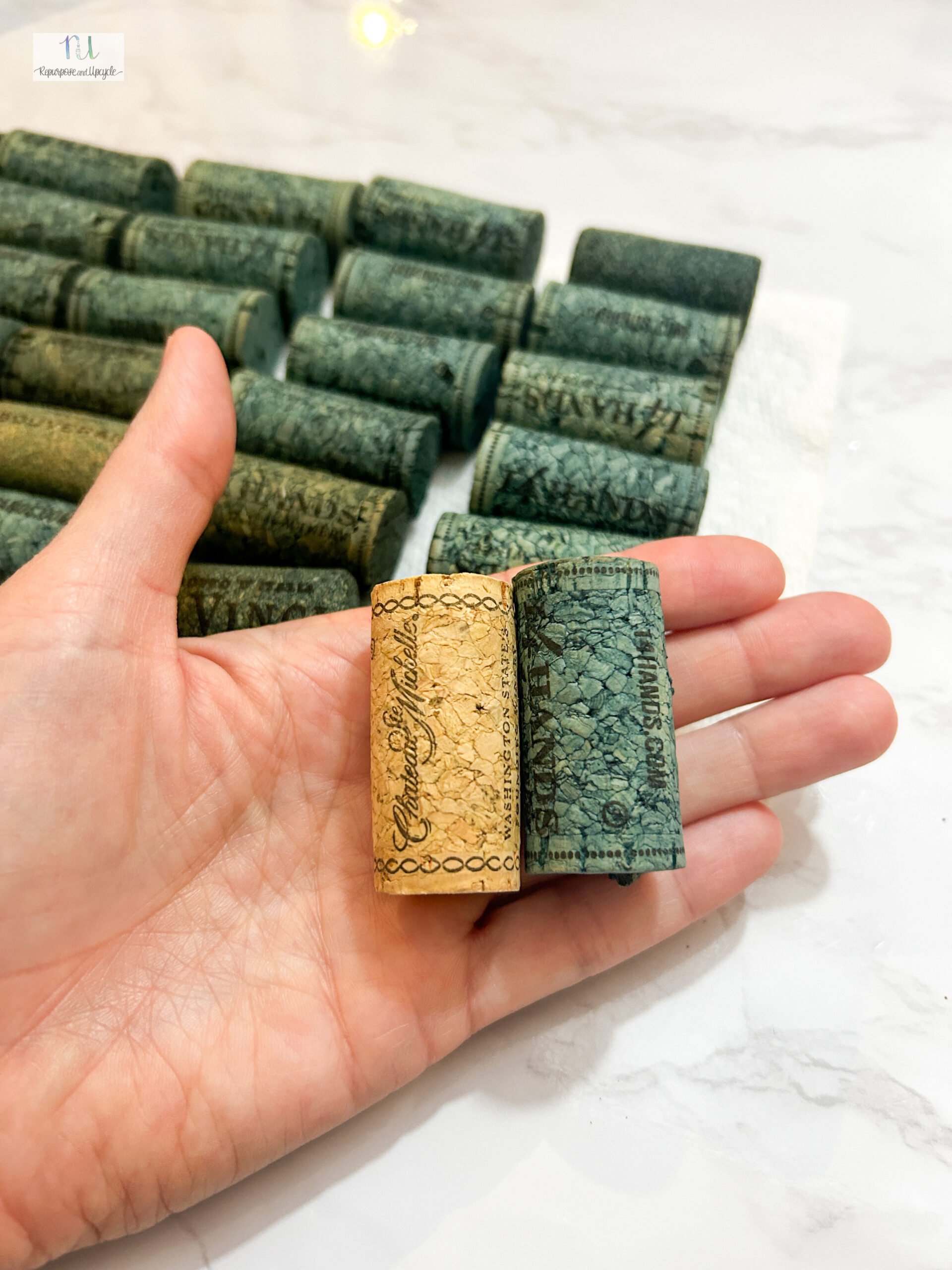Want to know the difference between Minwax Weathered Oak stain on pine wood vs. Varathane weathered oak stain on pine wood? Keep reading for all the details.
The weathered oak look is a popular trend these days. It adds a rustic, vintage feel to any space and is an easy way to give your home a unique look. But if you don’t have access to real weathered oak, how can you achieve the same look on pine wood? I’m going to explore the best methods for creating a weathered oak look on pine wood with two method; using Minwax stain vs. Varathane stain and a quick tutorial on how to create this finish with a blend of stains.
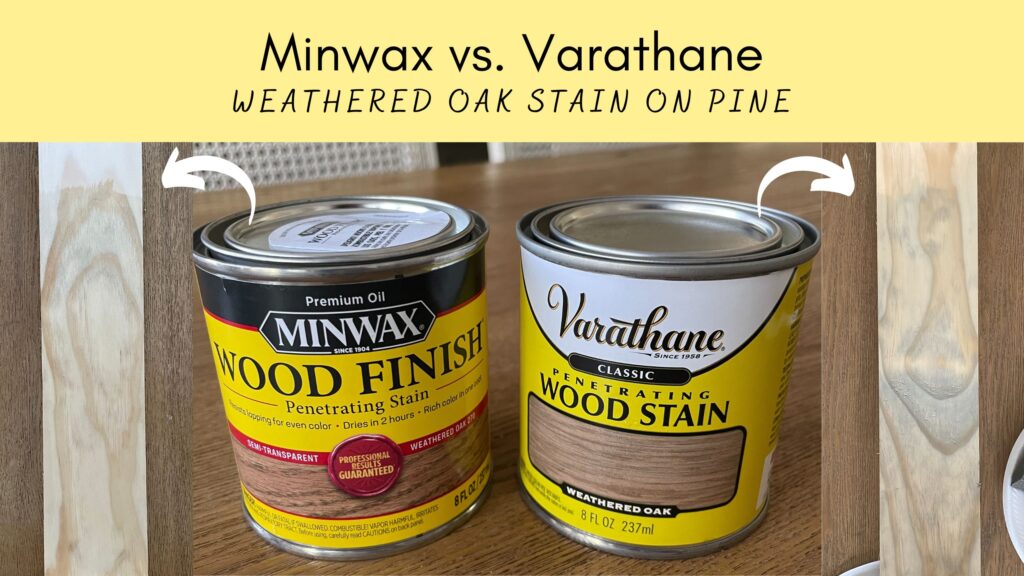
What Color is Weathered Oak Stain?
Weathered oak stain is a popular wood finish that can add a rustic, aged look to any piece of furniture. It’s a great choice for those who want to give their furniture an antique feel without the hassle of sanding and staining. But what color is weathered oak stain? Let’s take a closer look.
What Does Weathered Oak Stain Look Like?
Weathered oak stain has a unique, aged appearance that can be hard to replicate with other finishes. The color of weathered oak stain varies from light brown to dark gray, depending on the type of wood it is applied to. It typically has a slightly distressed look, with subtle variations in color and texture. The overall effect is one of rustic charm and timelessness.
What Types Of Wood Are Suitable For Weathered Oak Stain?
Weathered oak stain can be used on almost any type of wood, including pine, maple, cherry, walnut and more.
Prepare the pine surface first
Before you begin the process of creating a weathered oak look on pine wood, it’s important to prepare the surface properly. Start by sanding the wood with 120-grit sandpaper to remove any dirt or debris that may be present. Once the surface is clean and smooth, use a tack cloth or vacuum to remove any dust particles that may remain. This will ensure that your finish will be even and consistent.
Disclosure; this post contains affiliate links. As an Amazon Associate I earn from qualifying purchases. This disclosure statement refers to the rest of the Amazon links in this post. See more on my disclosure page.
Two different ways to achieve a realistic weathered oak look on pine:
- using multiple stain colors and blending them to achieve a weathered oak look
- using a weathered oak stain
How to create a realistic weathered oak look with multiple stain colors
Staining
Start by applying a light-colored stain such as Minwax Early American or Provincial to the entire surface of the wood making sure to apply it in the direction of the wood grain. Allow this coat of stain to dry completely before moving onto the next step. Once dry, apply a darker color such as Minwax Jacobean or Special Walnut in small sections across the surface of the wood. This will create an uneven appearance that mimics real weathered oak. Allow this coat of stain to dry completely before moving onto the next step.
Distressing
Once your staining is complete, it’s time to distress your piece for an authentic weathered oak look. To do this, use sandpaper or steel wool to lightly distress areas along edges and corners of your piece. You can also use tools such as hammers and screwdrivers for more dramatic distressing effects if desired. Be sure not to overdo it though – too much distressing can make your piece look artificial rather than authentic!
Finishing
Finally, finish off your piece with sealant or wax for protection against wear and tear over time. This will also help bring out all of those beautiful colors in your stained wood! Once everything has dried completely, you’ll have achieved an authentic-looking weathered oak finish on pine wood!
Check out my posts about how to seal wood succesfully:
How To Seal Painted Furniture for a High Traffic Surface
Protect Your Furniture! Best Clear Coat for Wood for a Lasting Finish
What’s Up With Furniture Wax and Why Do You Use It?
The second method in creating the weathered oak look on pine is using a weathered oak stain! I’ll be testing two products out today.
How to create a realistic weathered oak look on pine with Minwax weathered oak stain vs. Varathane weathered oak stain.
Make sure to check out the video in this post that shows great detail about my first impressions of each stain and how they look applied to the same piece of Pine wood. I also tried each stain with a pre-stain wood conditioner and without a pre-stain wood conditioner. Below are a few of my findings.
Valspar Weathered Oak Stain
- Darker gray tone than Minwax stain
- Blotchy when applied without a wood conditioner
- Final stain color looks more gray than brown
- More heavily pigmented
- Can be seen with just one coat of stain
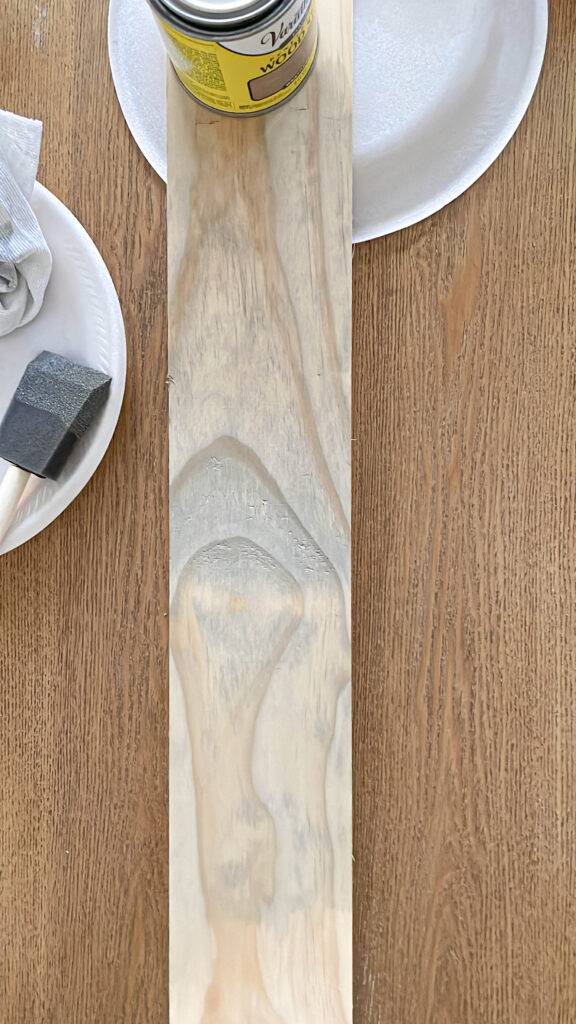

Minwax Weathered Oak Stain
- Lighter brown tone than Valspar stain
- Can be used with or without wood conditioner
- Final stain color is more brown than gray
- Requires at least two coats to be visible on Pine wood
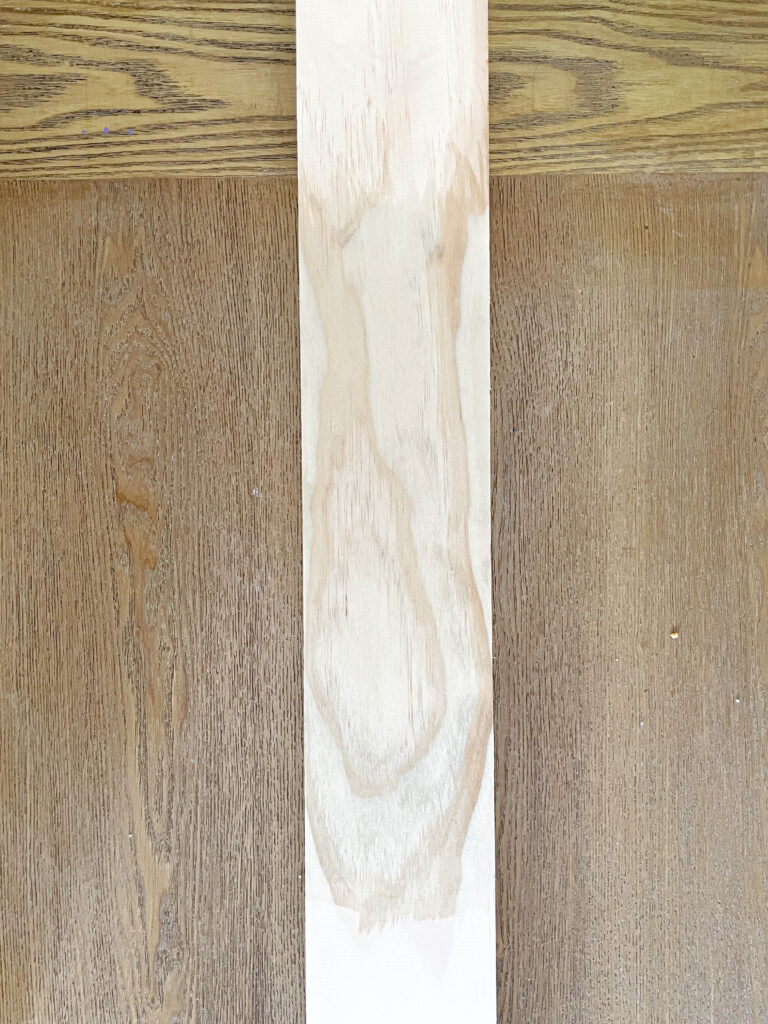
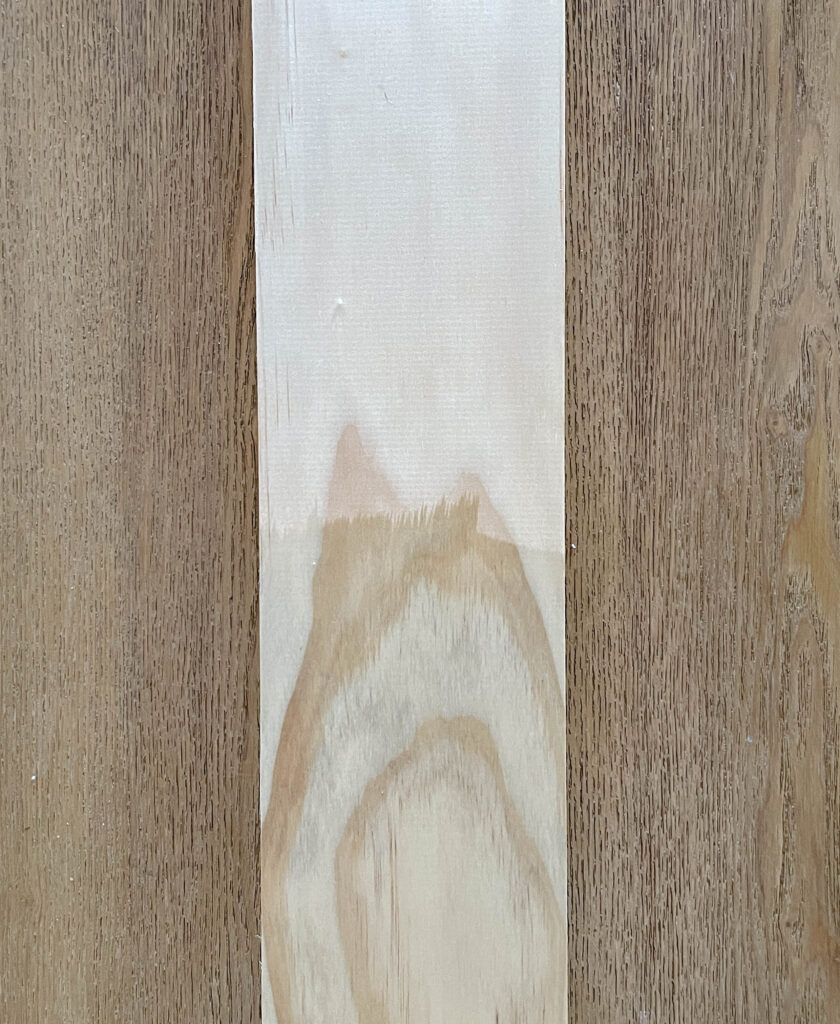

You can see that Minwax weathered Oak stain is barely visible on Pine wood when it’s been applied after a pre-stain wood conditioner. Varathane weathered Oak Stain, however, needs a pre-stain wood conditioner so it won’t look blotchy.
I think if I had to choose a favorite between the two it would be the Minwax because it gives a more subtle weathered look than the gray look. That being said, it’s ultimately a personal preference. Which is your favorite?
The exact color of weathered oak will vary depending on how heavy the stain is applied. Generally speaking, it ranges from light brown to dark gray with subtle variations in texture and hue throughout.
As you can see, all three methods will give you a slightly different variation of the “weathered Oak” look. It’s up to you to decide which one you choose.
Stain related blog posts:
Is there a White Wash Stain for Wood?
4 Common Types of Wood Stain with Product Examples
Valspar One-Coat Exterior Solid Stain & Sealer Review
How to Stain Wood Stairs Treads without Sanding
Ten Easy Gel Stain Cabinet and Furniture Projects
Wood furniture Makeover with Unicorn SPiT as a Gel Stain in Three Easy Steps
Stained Wood Stairs; Do they Need a Sealer?
How to Apply Wood Stain over Wood Stain
Wood Dye vs. Wood Staining; How and When to Use Each
Lindsey**


